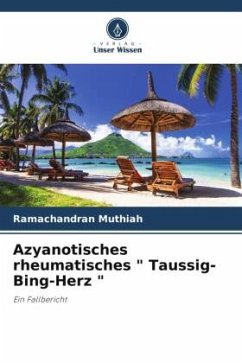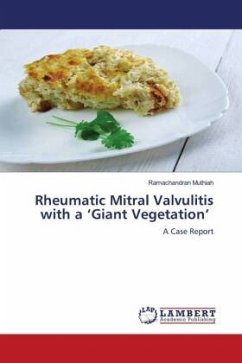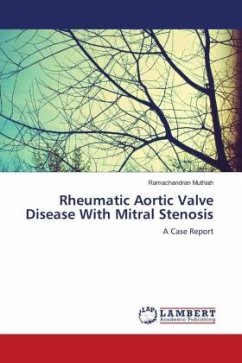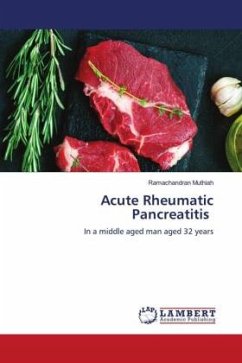
Acyanotic Rheumatic "Taussig-Bing heart"
A Case Report
Versandkostenfrei!
Versandfertig in 6-10 Tagen
29,99 €
inkl. MwSt.

PAYBACK Punkte
15 °P sammeln!
A 14-year old acyanotic boy presented with severe left-sided AV valve regurgitation and bradycardia. ECG revealed left sided morphologic right ventricular hypertrophy (RVH) as evidenced by a loss of septal Q waves in left precordial leads suggesting ventricular inversion. X-ray chest revealed a straight upper right cardiac border due to loss of normal relationship of great vessels and cardiomegaly due to both left atrial and morphologic right ventricular enlargement suggesting a left-sided regurgitant lesion. Echocardiography revealed the ventricular inversion, primary origin of both L-transpo...
A 14-year old acyanotic boy presented with severe left-sided AV valve regurgitation and bradycardia. ECG revealed left sided morphologic right ventricular hypertrophy (RVH) as evidenced by a loss of septal Q waves in left precordial leads suggesting ventricular inversion. X-ray chest revealed a straight upper right cardiac border due to loss of normal relationship of great vessels and cardiomegaly due to both left atrial and morphologic right ventricular enlargement suggesting a left-sided regurgitant lesion. Echocardiography revealed the ventricular inversion, primary origin of both L-transposed great arteries from the left-sided morphologic right ventricle suggesting a 'double-outlet morphologic right ventricle' with 'double discordance' and a subpulmonary VSD of Taussig-Bing type. The left-sided morphologic tricuspid valve is severely regurgitant due to rheumatic process resulting in heart failure which was improved with anti-failure measures and penicillin prophylaxis.












